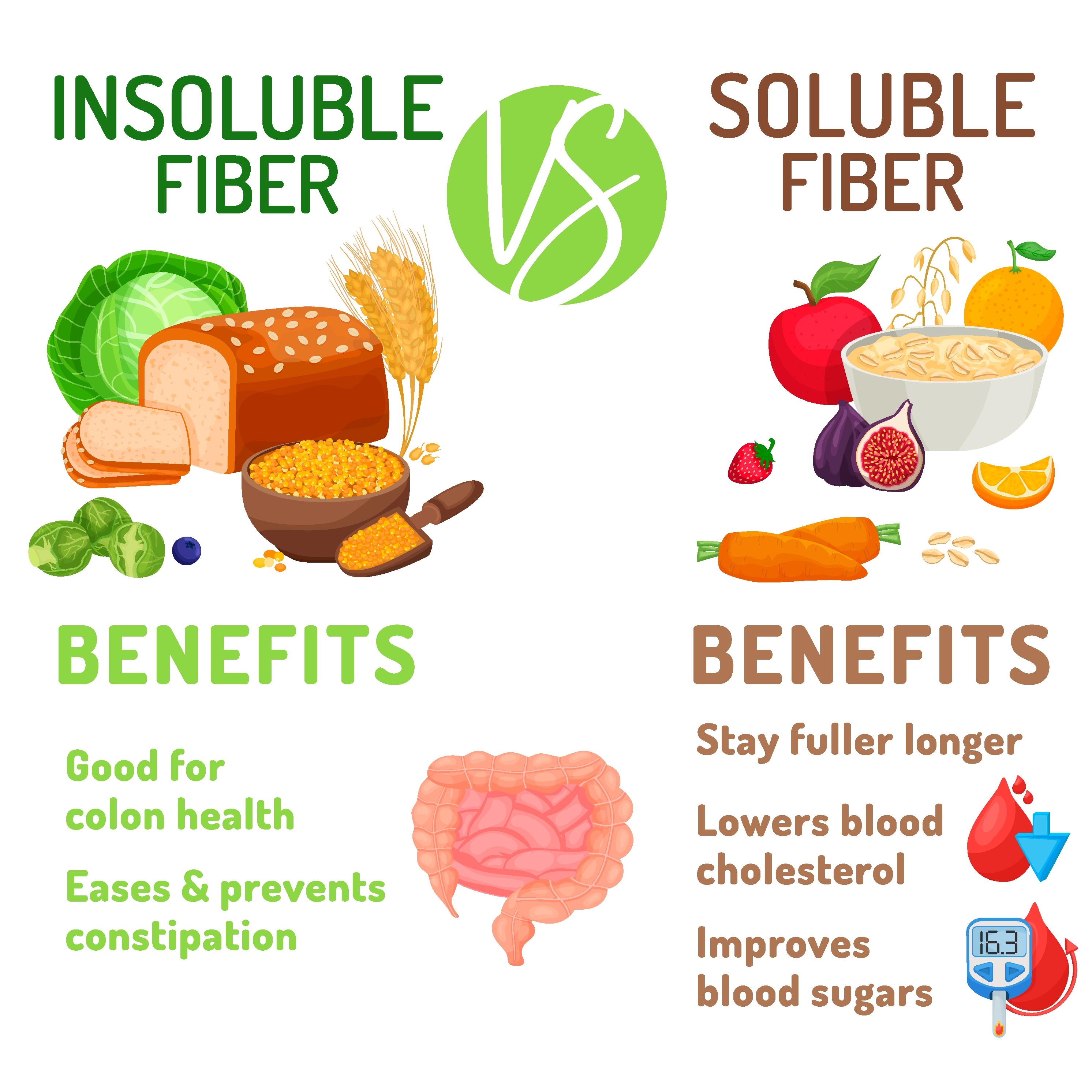The Facts About Fiber
Posted on March 13, 2023

Fiber. You’ve heard the word before and you’ve seen it advertised on product labels in grocery stores everywhere, but what is it? More importantly, why do we need it? Fiber, also known as roughage, is indigestible plant material that is not broken down by the body. This nutrient is found solely in carbohydrate foods such as fruits, vegetables, beans, legumes and whole grains.
There are two different types of fiber: soluble and insoluble, and each contributes its own role in maintaining your overall well-being.
Soluble fiber has been shown to delay gastric emptying, which provides us with the feeling of fullness after a meal. This feeling, if you acknowledge it, prevents us from overeating, which is beneficial when trying to lose weight (or prevent yourself from gaining). Soluble fiber also helps to reduce our cholesterol and blood sugar levels. Foods that contain soluble fiber include oats, legumes and fruits.
Insoluble fiber is what you’re probably more familiar with; this type of fiber helps to regulate our systems. Insoluble fiber decreases constipation (if present) and lowers the risk for diverticular disease and colon cancer. Foods that contain insoluble fiber include the skins of fruits and vegetables (another reason why whole fruit is a better option than juice, as juice has no fiber), whole grains and legumes.
Fiber is typically found in the outer layers of whole grains, so foods that are highly processed, like white bread, contain little to no fiber. That said, there are circumstances when low-fiber foods are necessary, like right before a sporting event and for those with certain medical conditions, such as Crohn's disease.
So, when you go about planning your meals for the day, make sure you include fiber-rich foods!
